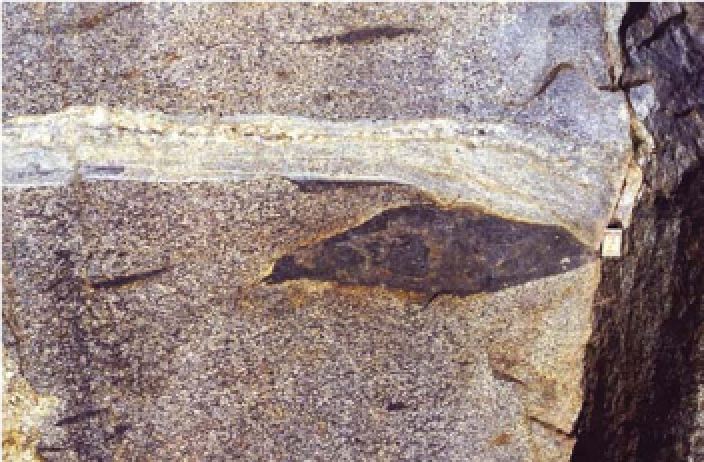Geology Reference
In-Depth Information
Yellowstone in Wyoming. Rapid withdrawal from high-level chambers has the
potential to juxtapose magmas of differing composition in a highly dynamic
environment where mingling and blending can take place. Compelling evidence
for magma mingling and mixing during explosive volcanism is seen in the form
of streaky pumice (Figure 9.11).
9.6 Xenoliths
Xenoliths are commonly sedimentary or metasedimentary country rock, often
discernable in the field by the preservation of bedding or other sedimentary
features. Xenoloiths come in a range of shapes and sizes, from amorphous
centimetre-scale inclusions to blocks the size of cars or bigger that are still
recognisable as sedimentary in origin. Contact relationships between xenoliths
and host rock are often brittle-like, characterised by sharp, angular shapes, imply-
ing a strong temperature contrast (thermal shattering) or high strain-rates at work
during incorporation within the invading magma. Angular xenoliths are often
cross cut by brittle veins of invading host magma, that in some cases, can be
seen to run parallel with pre-existing bedding. Other tell-tale signs of metased-
imentary origin include localised brown or rust-like staining (Figure 9.12). Not
to be confused with magmatic enclaves, xenoliths are sometimes used as evi-
dence for magma
ascent
via stoping, but are more likely formed during the
Figure 9.12
Flattened and angular metasedimentary xenoliths of Jurassic shale
in host granite, Cordillera Blanca, Peru.

















